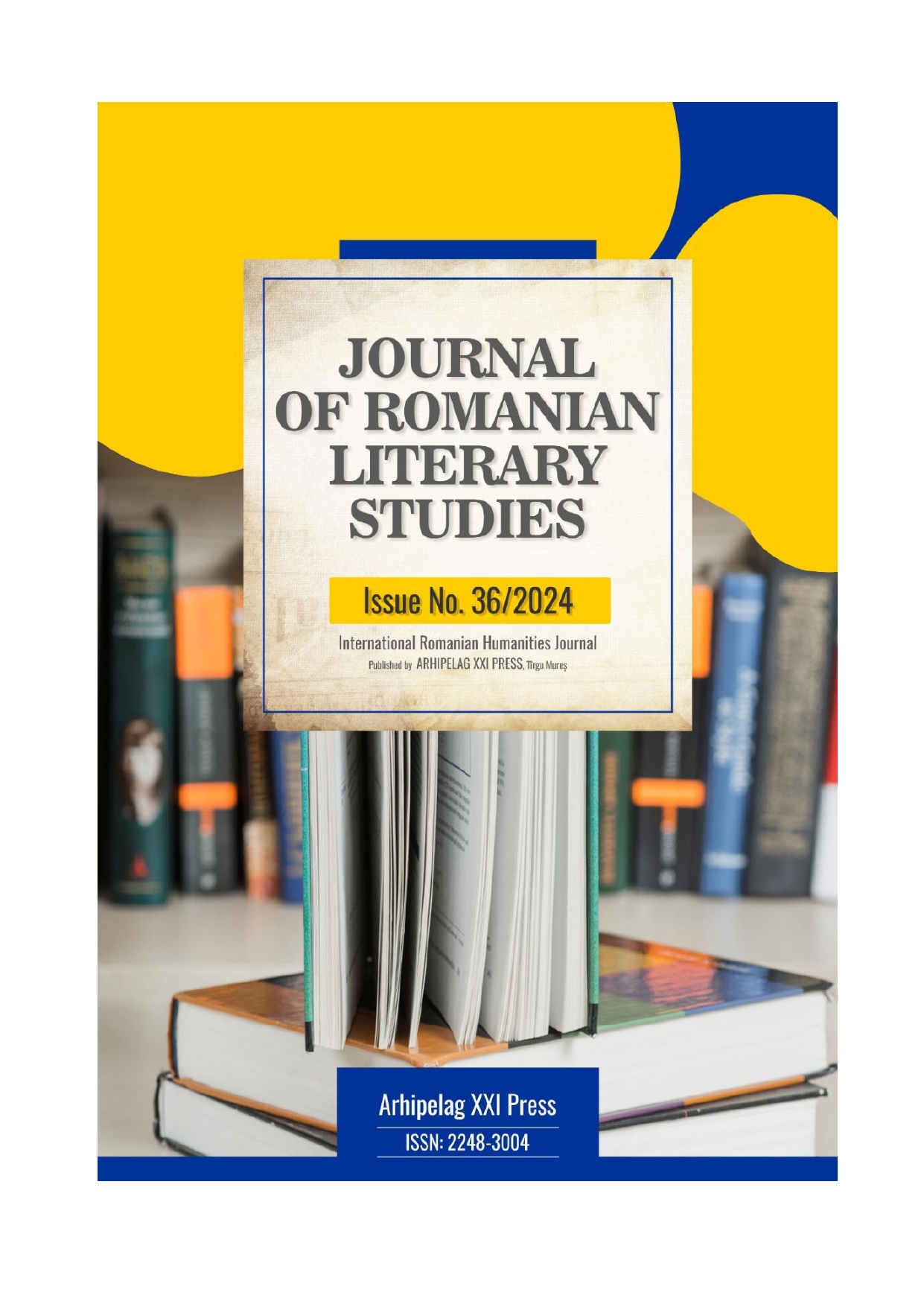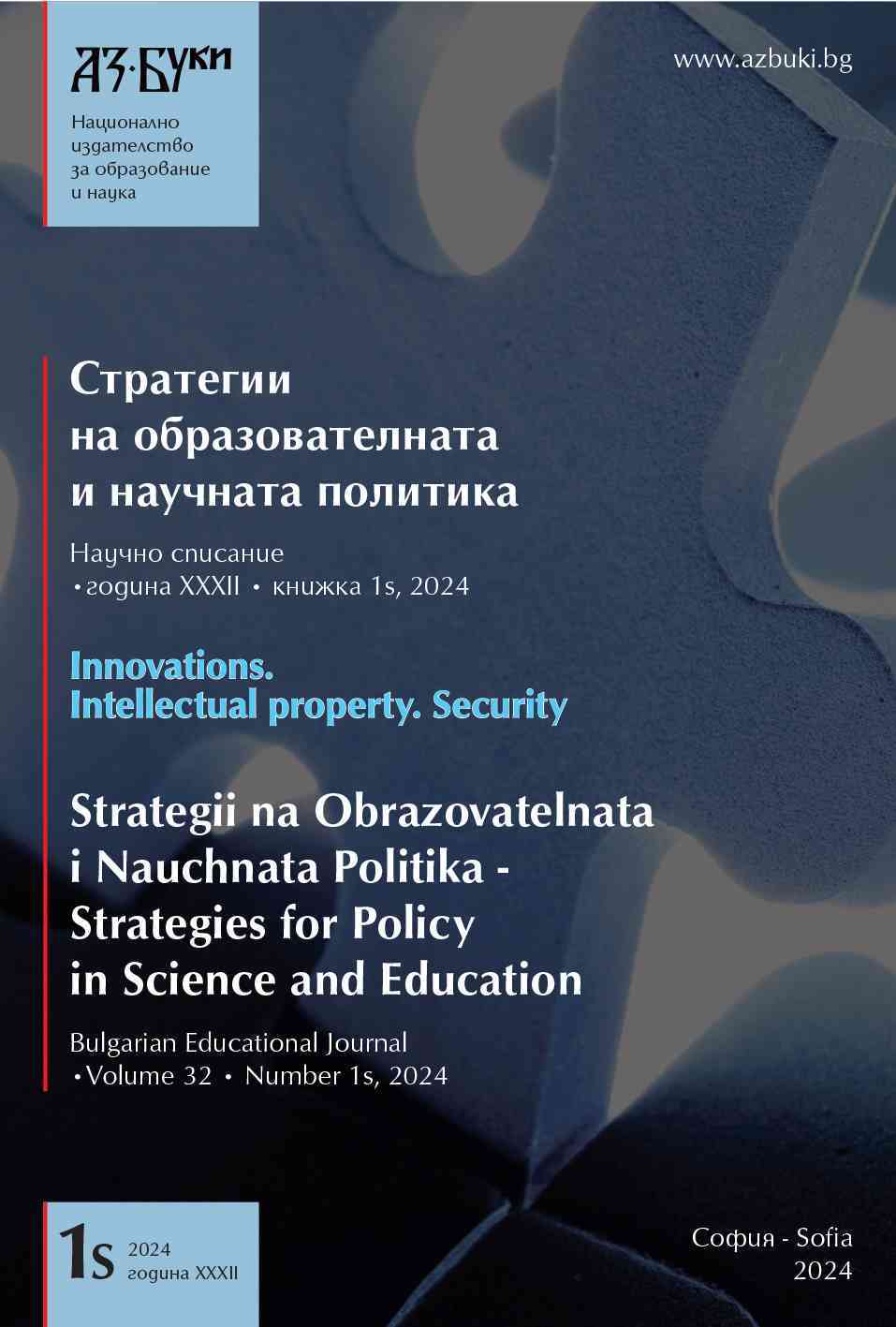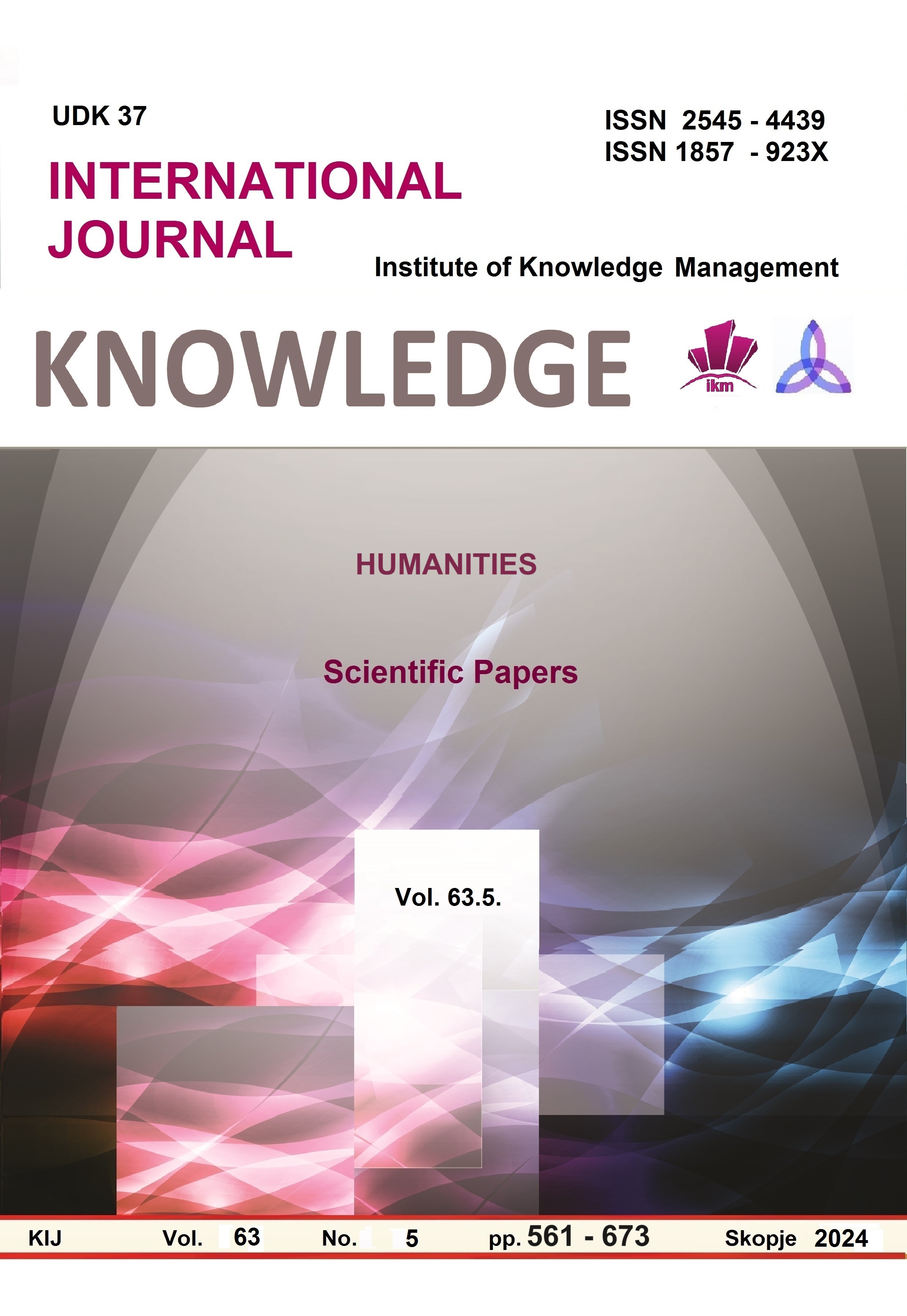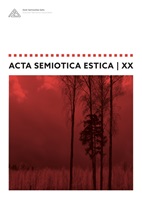
We kindly inform you that, as long as the subject affiliation of our 300.000+ articles is in progress, you might get unsufficient or no results on your third level or second level search. In this case, please broaden your search criteria.


The introductory section of this article comprises a condensed retrospection of previous researches in Serbian music between the two world wars. Basic problems faced by contemporary Serbian musicology have been pointed out. These include: incomplete bibliography, absence of monographic publications, general historic surveys, and system¬atic typological studies. Such a situation resulted from a scries of organizational difficul¬ties that, from the very beginnings of our musicology, accompanied the researchers' work. A section of the article pays attention to current problems of scientific personnel. The stale of material is also one of the essential problems. Unfortunately, the situation regarding finding, recording and expert and bibliographical treatment as well as publishing various material is still an important obstacle for a systematic scientific treat¬ment. historical surveys, analytical and critical evaluation of general tendencies of the period. Composing a single data bank of institutions and private collections where mate¬rial is conserved, as well as publishing scores and sound archives, are the first steps to be made in our musicology towards modern methodological views on the period of Serbian music between the two world wars. In the section Thematic Fields the author emphasizes the importance of contex¬tual studies of the musical heritage as a part of Serbian and European musical and cultural life It has been noticed that musicological views tend to focus on Belgrade with very little work dedicated to dominant music trends and phenomena in other parts of Serbia. Also discussed are problems contained in the notion of Serbian music between two wars. It has been pointed out that certain problems arise when in interpreting evolu¬tionary art trends we try to strictly connect them with lime limits provided by historical events. In the 20th century, Serbian history has recorded al least four wars, so it has been proposed to adopt in the future musicological practice, the expression ‘between two world wars" instead of the term "between the wars". When examining the problem of defining Serbian music in national terms, we find that the previous musicological practice was correct in regarding non-Serbian composers and musicians as well as Serbian authors whose careers were developed abroad as belonging to the same corpus. Il has been sug¬gested that future researchers should make comparative investigations of the activities of Serbian authors in the specific contexts of the ethnic cultures within which they worked during the period. Taking into consideration the tragic events of the recent political his¬tory in the former SFRY. it has been pointed out that especially provocative terms Yugo¬slav and Yugoslav national music as a unique notion, are bound to be revised. Modem comparative research also demands evaluation of the term music itself that ranges from the purely artistic (high-culture) to border-line, subcultural fields. In (his way, by studying the phenomenon of the trivial art, the knowledge on Serbian musical culture between two world wars would be considerably expanded. This would also enable a Imai delineation between the art-music corpus and the non-artistic genres corpus in historical writings. Without aspiring to complete the list, the Conclusion points to some insuffi¬ciently researched fields (e.g. sacred music) and current musicological (the problem of dominant and side trends) and terminological problems (including stylistic attributes and questions of musical realism).
More...
The article describes the methodological and scientific works of the Special Piano department teachers from the Chisinau State Conservatory, created in the period 1950–1970s. The most common type of unpublished articles are reviews of colleagues’ concerts, reports, abstracts, essays and musical collections. The most serious scientific plans of the teachers were related to the genre of the dissertation. In the 1960s. the scientific and methodological articles of teachers of the department of Special Piano begin to appear. The most significant part of them is formed by music collections, composed of the music of Moldovan composers. T. Voitsekhovskaya and A. Dailis compiled and edited musical aids for students of different ages. The uniqueness of these scientific and methodological opuses is due to the specifics of the material under study – the subject of a special piano, the subtleties of which are familiar to authors, pianists-teachers and performers from their direct professional activities. The named scientific publications opened the way for further research of pianists, who became especially numerous at the turn of the XX–XXI centuries.
More...
Until now, the values of the Moldavian book graphics of the period of 1945—2010s have been little studied, the criteria for their analysis and evaluation have not been established, and methodological approaches in this area were incomplete and fragmented. We consider it necessary to recall the essence and relationship of some theoretical concepts related to the „artistic image”, „artistic value” and „aesthetic value”, as well as the concepts of „narrative” and „symbol” in the context of an axiological analysis of national book graphics. This investigation will allow us to study the features and possibilities of the axiological approach to the research of illustrations created by local graphic artists. Such characteristic features of the artistic image as narrative and symbol can be interpreted as separate directions or principles of book design. At the same time, previous investigations have shown that in the evolution of national book graphics, narrative and symbol have gone through various stages of approaches and interpretations. Even the degree of evaluation of works with these characteristics has not remained unchanged. Thus, it seems important to analyze these concepts in the context of the evolution of artistic and aesthetic values inherent in book illustration.
More...
The present paper is designed with the intention of capitalizing on the narrative praxis of foreign travelers, which partially outlines the image of music from the culture of Moldova, resulting from their stay on the territory of the country. Starting from the researched historical sources, the content, presented in chronological order, highlights and analyzes the points of view of the travelers from outside, whose refl ections and comments facilitate the penetration into the realities of court music and fi ddle music, oft en considered “minor forms” of manifestation of the sound art, to which local research has oft en paid less attention. Captured from the perspective of the non-professional traveller, the described information reveals the circumstances, in which the services of music are appealed to and the share of the phenomenon in offi cial events. At the same time, the syntheses undertaken shed light on the exaggerations and (or) subjectivisms expressed in the interpretations and opinions of foreign visitors. Nevertheless, the travel notes have the role of contributing to broadening the horizon of national music in the historical period under research.
More...
Our article explores innovative approaches to learning less commonly used second languages (L2) through the use of digital storytelling, photo art, and H5P activities. Our research aims to investigate the effectiveness of digital storytelling in enhancing language acquisition, engagement, and cultural understanding among L2 adult learners. We examine the integration of photo art, which involves using visual images to stimulate language production and cultural exploration. The utilization of H5P activities, which are interactive and customizable learning modules that can be integrated into digital platforms, provide L2 learners with opportunities for active engagement, immediate feedback, and self-paced learning. Our article concludes by presenting preliminary findings that suggest the combination of digital storytelling, photo art, and H5P activities can significantly enhance L2 acquisition, motivation, and cultural awareness among adult learners of less commonly used L2 languages. We demonstrate that the use these tools encourage L2 learners to express themselves creatively and develop a deeper understanding of the target language and culture. The paper also discusses implications for language educators and offers recommendations for further research in this area.
More...
The last century of our history is longer and more complicated than any previous. Frequent wars, excessive consumption, moral norms violated, radical sexuality, the rule of image. Art, generally speaking, reflects the reality in personal forms which describe and confirm stylistic profiles. Romanian plastic art metabolizes these twists and turns in a particular way, on the background of deep and stable cultural-psychological substrates.
More...
The act of translating literary works is perhaps the most important tool in crossing cultural barriers, allowing for the dissemination of ideas, themes and art forms. In this paper we will be taking a look at how one such act- the translation of Italian works into Enlisting during the Elizabethan Era- took place; discussing its results and effect on the cultural landscape of the British Isles: from imitators to the development of new forms of prose and verse; but also taking a look at the pushback that emerged from those who opposed to such influences appearing in their society.
More...
In literature we find phrases about fables and medieval stories about animals, synthetic expositions of works with such themes, portraits of people with tricks and stubbornness, stupidity and imposture, the symbolism of the mask, the artistic treatment of the political message, the religious significance of animals, descriptions of animals with moralizing explanations, imaginary narratives. The cinematography completes the bestiary with novel and spectacular moralizing stories.
More...
In the center of attention of the paper, there are three Wallachian dance melodies in piano transcription, which, together with the music of other peoples, are included in a collection of songs published at the beginning of the 19th century in London. The article focuses on the morphological and syntactic analysis of the musical content, trying to distinguish the facets of the sound discourse, which would prove its belonging to the Romanian musical fund. The radiography, undertaken along the way, at the level of structural elements (motif, phrase, melodic profile) and musical language as a carrier of semantic, cognitive and affective information (intonations, scales, modes, cadences, modulation), aims to mark the specific particularities of the music of the national dance in the perspective of the melodies found in the London collection. The aspects investigated and the conclusions of the study underline the idea of the interest shown for our musical culture of oral tradition and its circulation abroad, which, along with the recognition of its artistic qualities, configures the ethnic specificity rendered through music.
More...
Despite the fact that today there is a fairly comprehensive material on the architecture of Western Europe in the 18th century and a significant amount of research conducted regarding the outstanding architects of that time. There is not a lot of information available regarding the formation of architectural education in Germany, as a system of educational institutions, or at least this information has not been synthesized to give a clear picture of the processes that took place in this timeframe. The main aim of this article is to outline a complete chronological picture of the events that took place and to enable the reader to trace the challenging path of the development of architecture from a craft to the academic discipline. Given the turbulent political processes in eighteenth-century Europe, particularly in Germany, the article highlights some political developments which, in turn, had a huge impact on the development of culture, education and social life in the country. The main achievement of the 18th century in the field of education was the introduction of a compulsory state examination to obtain a certificate of higher education. A mandatory special training requirement for construction majors was also introduced. During this period, several textbooks were developed and published. The academies were actively gaining and consolidating their influence in both in education and science. The first debates about the importance of art and science in the training of architects appeared at this time, which is up-to-date in contemporary debates as well.
More...
The study addresses the diverse and controversial aspects regarding the concept, notion and principle of authenticity in neo-traditional music, known as “popular/folk music”, promoted by the popular studio orchestra “Folclor”, within the Republican Television and Radio Broadcasting Company (TRM), in the ideological context of the Soviet period, throughout 1970-1980s. The author tries to reveal the directorial role of the Artistic Council of the TRM, as an institutional body of control, censorship, evaluation, homologation and political accreditation of the popular creations as cultural expressions of the Moldavian SSR, in accordance with the cultural policies of the party-state. Calling on the analysis of some studies on the topic, the synthesis of typical wordings from the minutes and the evaluation of the critics, exposed in the press pages of the era, the main characteristics of the neo-traditional popular/folk authenticity are highlighted.
More...
Bessarabian playwrights, at the turn of the centuries, addressed several taboo subjects, such as it was and still is the Dniester War of 1992. However, the evocation of this event that has already become history served as the pre/subtext of the following dramatic texts: Saxofonul cu frunze roșii/Saxophone with red leaves by Val Butnaru, staged at ”Luceafărul” Theater (1998); the plays by C. Cheianu Noi/We, staged at ”Luceafărul” Theater (1994), and Ţara asta a uitat de Noi…/This country has forgotten us…, at the National Theater ”Satiricus I. L. Caragiale” (2011); Fata cea mută a început să vorbească/The dumb girl started talking by D. Crudu, Teatrul Radiofonic România (2013); Tără(z)boi by Mariana Starciuc staged in Satu Mare, Iasi, Piatra Neamţ (2018); Valsul Tancurilor/Tanks’ Waltz by Irina Nechit staged at the National Theater ”Satiricus I.L. Caragiale” (2020). The scenes of the texts, written in different registers, alternate from deep drama to overwhelming tragedy, the amalgam of realism and fiction being, however, nuanced. Of an overwhelming topicality, these dramatic works are not only chronicles, but also open files in which the characters play the role of participants, witnesses, prosecutors, lawyers, executors. Thus, these plays are a true history lesson provoking the touching of sensitive chords and reviving the memory of present and future generations.
More...
Throughout the period of the People’s Republic of Poland, political and systemic solutions were undemocratic. There was the Main Office of Control of Press, Publications and Shows (GUKPPiW)., whose name was changed in July 1981 to the Main Office of Control of Publications and Shows (GUKPiW). On 13 December 1981, the communists (under the leadership of General Wojciech Jaruzelski) introduced martial law, which was abolished on 22 July 1983. The state authorities tried to stop the development of Independent Self-Governing Trade Union “Solidarity”. Society, including the makers of television serial and series, has been subjected to even tighter control. Preventive censorship had a negative impact on the development of cultural and artistic life. The aim of this article is to show the mechanisms of operation of Polish censorship (also in the historical and legal context), which had an impact on the broadcast of programs on Polish Television during martial law (1981-1983).
More...
In 1929 Karol Lanckoroński (1848–1933) donated his collection of scientific photographs to the Polish Academy of Arts and Sciences. Among the photographs of works of art and archeological relics in that collection we can also find prints of ethnographic nature, including photographs by Alfred Silkiewicz, a photographer with connections in Ternopil. On 6 July 1887 the heir to the throne Archduke Rudolph visited Ternopil and saw an ethnographic exhibition designed specially for his visit in the municipal garden. The central figures of the exhibition were residents of minor towns of Eastern Galicia brought to Ternopil, dressed in regional costumes. The text focuses on the circumstances of taking those photographs and on their significance as a source for researching the history of Galicia and its residents.
More...
The purpose of the article is to determine the place and importance of Chain of Title of a film or other audiovisual work, which is the basis of the successful sale of film industry products. The role of Chain of Title for film producers is imputed by film distributors, sales representatives and broadcasting organizations. The importance of proper and prompt formalization of business relationship between the industry product creators – which are the intellectual property rights holders, and the film producers is fundamental to the possibility the producer to generate revenue and profit from the film that will recoup the investment made, and also to provide rights holders with additional remuneration. In the Republic of Bulgaria, for the producers of films and other audiovisual works, the issue Chain of Title is still not fully clarified and the article focuses on the process of presenting this essential information from the point of view of the current regulations in the field, the requirements of distributors, broadcasters, and to present the author’s experience in obtaining the Chain of Title process. The methodology used, allows to present accessible and practical information, both for professionals in the field of the film industry, as well as for teachers and students.
More...
Before delving into the two themes that outline the period of socialist system in Albania (1944-1991). We will attempt to provide a brief retrospective by referring to the early influences of Italian culture in Albania. Based on historical facts, the influence or impact of Italian culture during the socialist period did not start there, nor was it incidental, but rather a continuation of a relationship that dates back hundreds of years. One of the theses of Italian cultural influence in various aspects of Albanian life is the geographical proximity between the two countries. By carefully observing the distant past now belonging to history, we notice that there is an extra factor, other than geographical proximity that serves as the glue for this cultural fusion. The question arises: What is it? What were the reasons that made Italian political and cultural hegemony necessary in Albania? The first undeniable fact that catches the eye is, Albania borders many nations, but none of the neighboring Balkan countries have had the same effect as Italy. The Albanian people resonate more with Italian culture than any other. Italian influence has been embraced by Albanians as a welcomed addition rather than an imposed one. There may be several reasons. Today we will consider the main reason: the similarity in temperament and inevitable intertwining of history between the two nations. The beginnings of this path of cultural influence date back very early. Referring to history, the Italo-Albanian connections date back to around the 1800s. But if we go even further back in time, it would be the years 1259, and then 1478, when the Ottoman army's conquest of Kruja, triggered the exodus of Arbëreshi settlers towards Calabria.
More...
The article brings back the religious plays for children, which have been removed from the publishing, libraries, and readers’ circles. Their first issues were published before the Second World War. Their new editions, from the years 1945–1950, came with the erasure of such aspects as: Eastern marches (Vilnius, Lviv), Polish-Bolshevik war of 1920, Polish legions and Józef Piłsudski, and Jews. The Author focuses on following the changes made by censorship at that time. In conclusion, it must be underlined that changes introduced in the plays did not save them from the wave of purges in school and public libraries in the early 1950s.
More...
This article is a case study of an English-Estonian interlingual translation of Tom Stoppard’s “Leopoldstadt” and the Estonian stage production of the same play. The analysis uses material translation theory in the context of drama translation, approaching the stage production as a semiosphere, i.e., a temporally and spatially limited sphere where meaning is constructed in communication among different sign systems. The analysis is constructed similarly to the translational process: first, we analyse the English-language play as a source text (keeping in mind that this, too, is the result of intertextual translational processes). Second, we will analyse the English-Estonian interlingual translation by Kalle Hein. Third, we will analyse the intersemiotic translation of the stage production in Vanemuine (staged by Tiit Palu, premiered in September 2023). Lastly, we will revisit the interlingual translation to see if different phrasing of the same thought could have any effect on the end result, and vice versa: could the stage production and mise-en-scène, i.e., the interplay of different meaning-making systems and theatrical signs have an effect on the interlingual translation? The main objective of this analysis is to offer drama translators insight about the life span of a translated play to enable more meaningful choices in their translations.
More...
From the late perestroika period, when the socialist realist tradition lost its official status and support from the state, the Russian contemporary art scene attempted to follow common international tendencies. Like other aspects of post-Soviet cultural life, it underwent a process of marketisation when individual artistic creativity and an artist’s reputation acquired its economic value. However, this process was not straightforward; only a handful of artists were able to enter the high-end luxury art market with its own distribution channels and demand patterns. Like in other countries, the process of creation of economic value in the Russian contemporary art market represents a special case of business activity. It depends to a higher degree on artist branding, tastes, and networking as well as global and national trends in consumption. This makes investment in this type of art risky involving high transaction costs. Starting with the establishment of the first art galleries and emergence of the institution of art dealers in the late 1980s, the Russian contemporary art market and its actors have been to a great extent oriented towards importation and imitation of the key Western practices and institutional patterns.1 Besides the above-mentioned galleries and art dealers, these include art fairs, auction houses, specialised museums and art curatorship, critics, academic and educational institutions, and commercial expertise.
More...